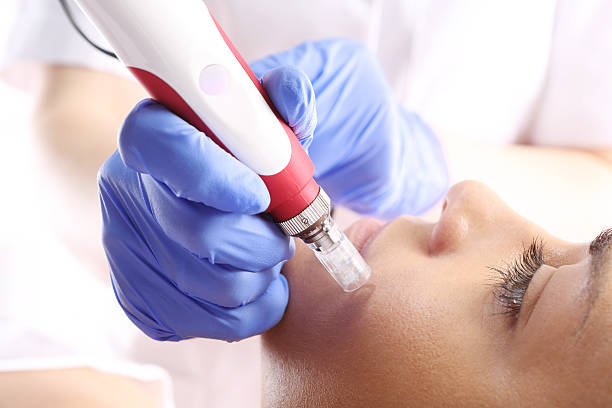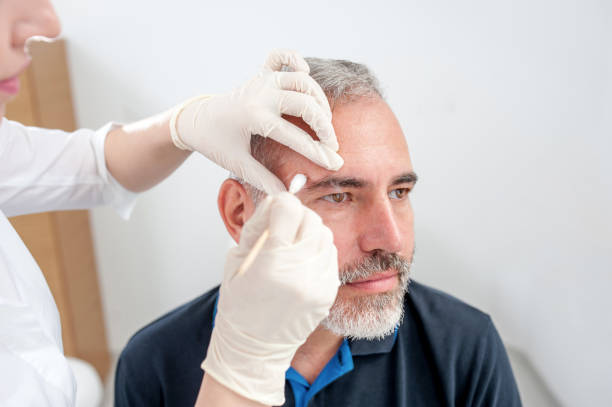
Birth Marks Treatment
A birthmark is a blemish on our skin, which can be presented in the various forms of shape, size colour and length. Some birthmarks are fading away as you grow longer and some types of marks remain for permanent and for this the cosmetic surgery procedure are done to remove such splotch of the skin. Some birthmarks are small and inconspicuous and some others have the most prominent appearance that causes the low self-esteem in the patient.
To remove the birthmark is the prime concerns of a cosmetic surgery and for doing this the Surgeon/Doctor must have the full practice and knowledge about the birthmark removal surgery. As there are many questions and concerns regarding the birthmark that a patient supposed to have the information and the Surgeon/Doctor should be aware of all those to offer the best birthmark treatment.
Before going to take the treatment for the birthmark removal it is recommended to get in touch with the best cosmetic surgeon to assure about the fruitful practice.
Types of Birthmarks
There are many different types of birthmark. Most of them are caused by a problem with the tiny blood vessels (capillaries) in your child’s skin. These are called vascular birthmarks. Some of the most common types are described here.
Stork mark/salmon patch (naevus simplex)
These are the most common type of vascular birthmark – about half of all babies are born with a stork mark. They are flat red marks usually found on the back of your baby’s neck, upper eyelids or the middle of his or her forehead. They are more noticeable when your baby is crying. Most stork marks fade away, especially those on the face, although some may last longer and persist into adulthood.
Strawberry mark (capillary haemangioma)
About one in 10 babies will develop a strawberry mark during the first month after they are born. These Birthmarks get their name because they sometimes look similar to a strawberry. Strawberry marks can appear anywhere on your child’s skin, but six out of 10 are found on the face or neck. A strawberry mark starts off as a small, red patch, which increases in size over about three to nine months and becomes a bright, red lump. It then stops growing and slowly shrinks.
You may be worried about your child’s strawberry mark, but usually, it doesn’t need any treatment and gradually disappears over a period of time.
As a guide:
Once your child’s strawberry mark has disappeared, there may be little sign that it ever existed. However, occasionally the affected area of your child’s skin may be a bit lighter in colour or there may be tiny red veins (thread veins) on the surface.
Port wine stains (naevus flammeus)
These are present at birth and affect about three in 1,000 babies. They are flat marks that are red/purple and vary in size and shape. They can occur anywhere on your child’s body, but are most common on the face, upper chest and back. Port wine stains usually only affect one side of a child’s body.
A port wine stain may get bigger and darker as your child grows up. It may also develop an uneven or lumpy surface.
Mongolian blue spot
Mongolian blue spots are blue/black areas of skin that appear most often on your child’s buttocks and lower back. They are more common in babies of African, Chinese or Japanese origin. If your child has this type of birthmark, it will probably have disappeared by the time he or she is about five years old.
Congenital melanocytic naevus
These aren’t vascular birthmarks but are areas where large numbers of cells called melanocytes get grouped together. Melanocytes produce a pigment called melanin, which gives your skin its colour. Where melanocytes cluster together your skin is darker.
The colour of this type of birthmark varies from mid-brown to black, depending on your child’s natural skin tone. They may be raised or have hairs growing out of them. Congenital melanocytic naevi are most often found on your child’s back and sometimes on his or her head and neck.
Most birthmarks are harmless and fade away. However, some children may have more serious problems as a result of their birthmark.
If a strawberry mark grows on your baby’s eyelid, it will need to be treated within the first few weeks of his or her life; otherwise, it may seriously interfere with the development of his or her vision. Your child’s strawberry mark may need to be treated soon after he or she is born if it interferes with his or her feeding or breathing or if it’s in his or her nappy area.
Rarely, your child’s strawberry mark can become ulcerated or develop an open sore, which can be painful and may become infected. If this happens, it’s important to seek medical advice. Ulcers usually heal within a few weeks; otherwise, your child may need to have laser treatment.
Port wine stains on your child’s face can occasionally be related to a condition called Sturge-Weber syndrome. This is a disorder of the nervous system that can lead to epilepsy, glaucoma (a disease of the eye that can cause blindness) and learning difficulties. However, this is very rare.
There is a slight risk that melanocytic naevi may develop into a type of skin cancer called melanoma.
The exact reasons why some babies have or develop birthmarks aren’t fully understood at present. It’s thought that vascular birthmarks aren’t inherited.
Strawberry marks are thought to be caused by an overgrowth of the cells that make up the lining of your child’s blood vessels. Around three in four strawberry birthmarks may be caused by a tiny piece of the placenta attaching itself to your developing baby very early in the pregnancy.
Port wine stains are areas of your child’s skin where the nerves that control the widening and narrowing of the capillaries are damaged. This means that the blood vessels are always open, so the skin over them appears darker because there is a constant flow of blood to it.
If your child has a birthmark that you’re concerned about, contact your GP. He or she will be able to tell you that what sort of birthmark it is by looking at it and asking you about its development (for example, how much it’s grown if it’s a strawberry mark).
Your child may be referred to a paediatrician (a doctor specialising in children’s health), a dermatologist (a doctor specialising in skin conditions) or a doctor who specialises in birthmarks.

birthmarks-removal
Some birthmarks disappear without needing any treatment. However, you or your child may decide that he or she should have treatment if the birthmark causes problems or if it’s unsightly.
If your child’s strawberry mark bleeds a lot or becomes infected, clean it, cover it with a sterile dressing and contact your GP for advice.
Your child may need to have laser treatment if he or she has a strawberry mark because they can cause more serious problems. A laser is directed at your child’s birthmark and the capillaries there are carefully burned. This means that there is no longer a blood supply to the area, which can help strawberry marks to shrink and heal more quickly.
Your child may be prescribed medicines called steroids with or without laser treatment. These will either be given as injections or taken through the mouth. Your child may need to take steroids if the strawberry mark is near his or her eyes, lips or nappy area, to limit further growth.
You or your child may wish to have laser treatment for a port wine stain. This will be done under general anaesthetic if your child is very young or if the birthmark is very big. This means your child will be asleep during the procedure and will feel no pain. Adults having laser treatment usually need to have only a local anaesthetic – this completely blocks feeling from the area and you will stay awake during the procedure.
It may be necessary to have several laser treatment sessions – this will depend on how big and how dark the port wine stain is. Laser treatment can have side-effects, such as bruising immediately afterwards. There is also a possibility of scarring, although this is rare. However, treatment can be very successful and it’s likely that the birthmark will be much less noticeable than before.
If your child has a birthmark that is very visible, you may sometimes find other people’s reactions difficult to deal with. Your child may also have questions or find that other children make comments about their birthmark. It’s important to be prepared for this and to help your child to be confident in coping with situations that may arise. There are support groups that can offer you information and advice.
Skin camouflage
You may wish to use skin camouflage products. These are special creams and powders that cover and hide your child’s birthmark when they are used properly. For the best result, it’s advisable to see a professional practitioner who can colour match your child’s skin tones.
Medispa Laser, Cosmetic & Hair Transplant Centre, Jaipur (Rajasthan) & New Delhi, India is headed by World’s topmost Cosmetic & Plastic Surgeon Dr Suneet Soni gives the true value of the cosmetic surgery procedure with at an affordable cost and benefits. The birthmarks treatment cost of Medispa is quite genuine and easily accessible to all economic group of people. The treatment of birthmarks in Jaipur is counted as the worthy decision since this pink city of India has a credential of having the best cosmetic surgeon in their courtyard.


Hair transplant surgery aims to achieve a result that is as natural as possible. In order to do this, however, we need more than the most up to date techniques.